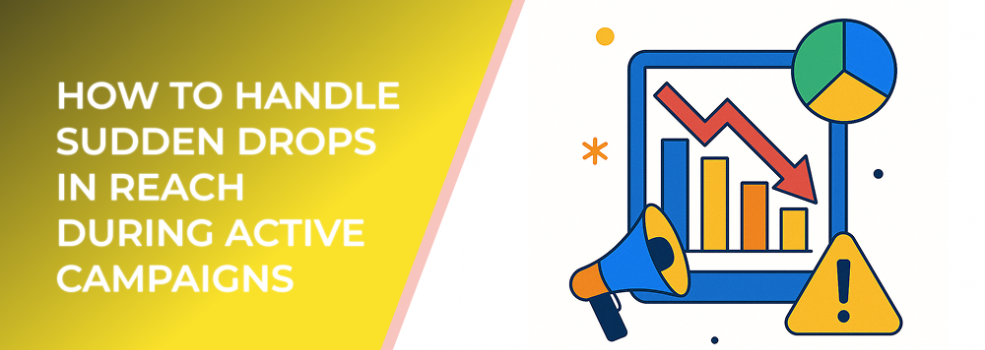You’ve got a campaign running smoothly, then overnight your reach plummets. No major changes, no obvious issues—just fewer impressions and weaker engagement. Sound familiar? You’re not alone.
Sudden drops in reach can happen for many reasons, from algorithm updates to budget misallocations. The key is to diagnose the cause quickly and act strategically instead of reacting emotionally.
1. Check for Learning Phase Resets
If you’ve recently edited your campaign—adjusting targeting, budget, or creatives—it might have re-entered the learning phase. During this stage, Meta’s algorithm gathers data again to optimize delivery. According to Meta, campaigns in the learning phase can see up to 30% less reach temporarily.
What to do:
Avoid frequent, large edits to active campaigns. Instead, batch changes or duplicate the ad set if you need to test new settings.
2. Review Audience Saturation
If your reach declines steadily after strong initial results, your audience might be too small or overexposed. Once frequency rises above 2.5 to 3.0, ads often lose efficiency, especially if the same creative runs too long.
What to do:
Refresh creatives, expand your audience slightly, or create lookalike segments. You can refine your targeting strategy using the insights in Facebook Ad Targeting 101: How to Reach the Right Audience.
3. Inspect Budget and Bid Strategy
Even small budget shifts can trigger changes in ad delivery. For instance, a sudden decrease can pull your campaign out of competitive auctions. Conversely, a big increase can overwhelm the learning phase.
What to do:
Adjust budgets gradually—Meta recommends no more than 20% change per day. Also, review your bid strategy; switching from lowest cost to cost cap without enough data can cause underdelivery.
4. Check for Policy or Quality Issues
Sometimes, reach drops because of hidden ad quality penalties. Ads with low engagement or misleading claims can face reduced delivery priority even if they’re approved.
What to do:
Check your ad relevance diagnostics (Quality, Engagement, Conversion Ranking). If your Quality Ranking is below average, focus on improving creative clarity and alignment with the audience’s intent. You can learn more optimization tactics in Facebook Ads Not Converting: How to Fix It.
5. Review External Factors
Sometimes, the issue isn’t with your campaign at all. External factors like holidays, regional events, or market competition can cause costs to spike and impressions to drop. For example, during Black Friday or major sports events, CPMs can increase by up to 40%, reducing delivery for lower-bid campaigns.
What to do:
Monitor CPM trends in Ads Manager and plan for seasonal fluctuations. Use historical data from previous campaigns to anticipate volatility.
6. Audit Pixel and Tracking Setup
A broken or misconfigured Meta Pixel can interrupt conversion tracking, which in turn affects optimization and reach. Missing events can make the system think your campaign isn’t performing well.
What to do:
Run the Pixel Helper or Event Manager diagnostics to ensure all key actions are firing correctly. Also, double-check that your aggregated event measurement settings are accurate.
7. Reassess Creative Fatigue
Creative fatigue is one of the most common reasons for sudden performance drops. When users have seen your ad too many times, engagement declines and the algorithm deprioritizes delivery.
What to do:
Introduce new visuals or copy variations. Rotating ad creatives every 7–14 days helps maintain performance and prevent drop-offs.
8. Use Data to Isolate the Problem
When reach drops, analyze metrics systematically:
-
Impressions vs. Reach: If impressions are steady but reach drops, frequency is likely too high.
-
CTR Decline: Suggests creative fatigue or poor audience alignment.
-
CPM Increase: Indicates rising competition or lower ad quality.
-
Delivery Status Changes: Can signal learning phase resets or policy issues.
Once you find the root cause, make targeted changes—avoid overhauling everything at once.
Final Thoughts
A drop in reach isn’t always a disaster; often, it’s just part of your campaign’s life cycle. The best advertisers treat it as diagnostic feedback. When you respond with data-driven adjustments rather than panic, you protect both performance and ad spend.
For a complete recovery strategy, combine optimization with proactive monitoring. Use Meta’s delivery insights to predict issues early and keep your campaigns stable and profitable.
Suggested reading:

